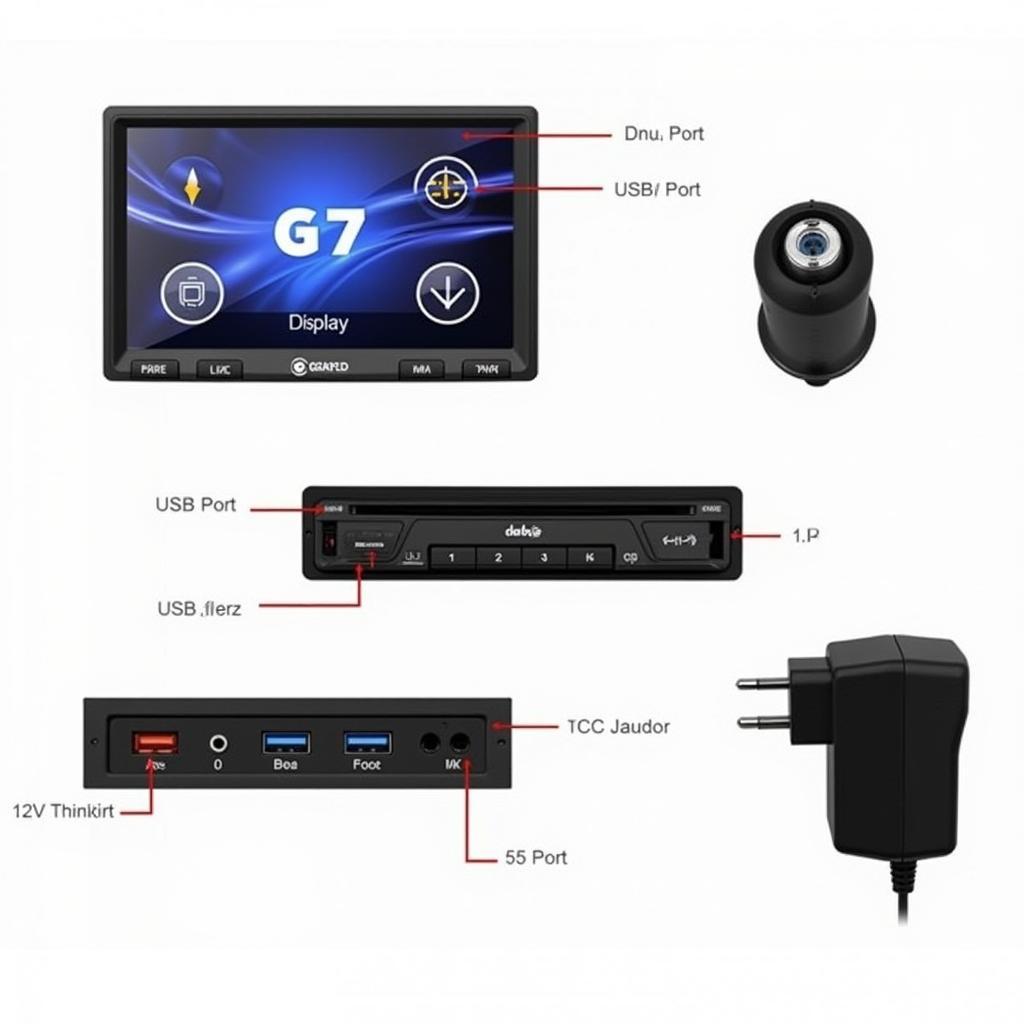Subaru brake and battery warning lights illuminating simultaneously can be a concerning sight. This guide dives into the common causes, troubleshooting steps, and solutions for when both these critical warning lights appear on your Subaru dashboard. Understanding the potential problems can save you time, money, and unnecessary stress.
Understanding why these lights appear is crucial for addressing the underlying issue. The brake warning light can indicate various problems, from low brake fluid to worn brake pads. The battery light signals a potential issue with the charging system. When both lights illuminate together, it often suggests a connection between the two systems, most commonly related to the alternator.
What Causes Both the Brake and Battery Warning Lights to Come On?
The most frequent culprit when both the brake and battery warning lights appear is a failing alternator. The alternator is responsible for charging the battery and powering the electrical systems while the engine is running. If the alternator malfunctions, the battery isn’t recharged, leading to a drop in voltage. This voltage drop can trigger both warning lights, as the brake system also relies on electrical power for proper function. Other potential causes include a loose or corroded battery terminal, a faulty voltage regulator, or even a failing battery itself. It’s crucial to diagnose the problem correctly to avoid further damage. For more specific information regarding brake and battery light issues in Subarus, check out this article: subaru battery brake warning lights.
Why is my car’s alternator important?
The alternator keeps your battery charged and powers the car’s electrical systems. Without a functioning alternator, your car will eventually lose power and stall.
Troubleshooting Subaru Brake and Battery Warning Lights
Several steps can help you pinpoint the cause of this dual warning light issue. Firstly, check the brake fluid level. Low brake fluid can trigger the brake warning light. If the fluid level is low, top it off and see if the lights go out. Next, inspect the battery terminals for corrosion or looseness. Clean or tighten them as necessary. If these initial checks don’t resolve the issue, it’s likely a more complex problem requiring professional diagnosis. You can learn about specific reset procedures for brake warning lights in a 2012 Subaru Outback at 2012 subaru outback brake warning reset.
How do I check my brake fluid level?
Locate the brake fluid reservoir under the hood, usually near the firewall. The reservoir will have minimum and maximum markings. Ensure the fluid level is between these markings.
Solutions for Subaru Brake and Battery Warning Lights
Depending on the diagnosis, the solution may range from a simple fix to a more involved repair. A faulty alternator will require replacement. A corroded or loose battery terminal will need cleaning and tightening. A failing battery will need replacement as well. It’s essential to address the root cause promptly to avoid further complications. For those experiencing a brake warning light issue specifically on their 2012 Subaru Outback, this article might offer valuable insights: 2012 subaru outback brake warning light.
“A common mistake people make is ignoring these warning lights,” says John Smith, ASE Certified Master Technician. “Addressing the issue early on can prevent more costly repairs down the road.”
Remote Diagnostics and Software Solutions
Modern technology allows for remote diagnostics and software programming to address certain vehicle issues. While not all problems can be solved remotely, remote services can sometimes identify the underlying cause and even apply software updates to resolve software-related problems, saving you a trip to the mechanic. This is especially useful for addressing specific issues like a brake warning light that goes off when brakes are applied, as discussed in this article: brake warning light goes off when brakes applied. For those working with older models, like a 1996 Subaru Legacy, understanding the wiring diagram can be beneficial. More information on this can be found here: 1996 subaru legacy brake warning wiring diagram.
“Remote diagnostics are becoming increasingly important in modern car repair,” adds Jane Doe, Automotive Electrical Engineer. “They provide a quick and efficient way to identify many common vehicle issues.”
Conclusion
Subaru brake and battery warning lights appearing together should not be ignored. Addressing the problem promptly can prevent further damage and costly repairs. By understanding the potential causes and following the troubleshooting steps outlined in this guide, you can effectively address this issue and ensure your Subaru remains safe and reliable.
FAQ
- What should I do if both warning lights come on while driving?
- Can I drive my Subaru if both lights are on?
- How much does it cost to replace an alternator in a Subaru?
- How often should I check my brake fluid level?
- Can a bad battery cause the brake warning light to come on?
- Is it safe to drive with a low battery?
- What is a voltage regulator and how does it affect the battery and brake systems?


